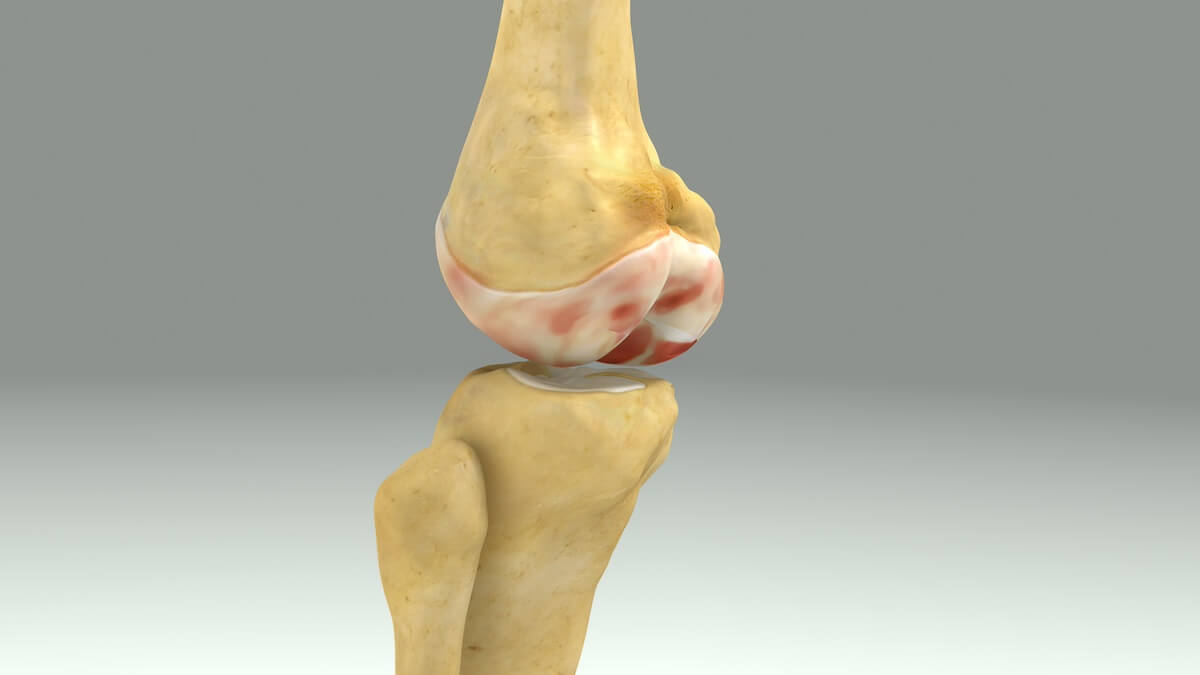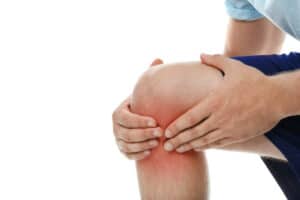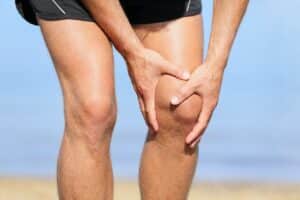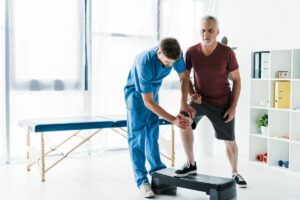Free download: Top 10 Natural & Easy Remedies for Joint Pain from Home. Learn these helpful remedies.
Estimated Reading Time: 7 minutes read
Living with knee cartilage loss can be challenging, affecting your mobility and quality of life. However, including specific exercises in your routine can significantly improve your knee strength and alleviate some of the discomfort associated with this condition. In this easy-to-understand article, we will explore the best exercises for knee cartilage loss, ensuring you can take proactive steps toward better knee health.
Knee cartilage loss, often a result of wear and tear, aging, or injury, leads to knee pain and stiffness, making everyday activities difficult. The key to managing and potentially improving this condition lies in strengthening the muscles around the knee. By focusing on gentle, effective exercises, you can help support and stabilize the knee joint, providing relief and enhancing mobility.
Table of Contents
Understanding Knee Cartilage Loss: Causes and Symptoms
Before diving into the exercises, it’s essential to grasp the causes and symptoms of knee cartilage loss. This understanding will not only help you appreciate the importance of the exercises but also allow you to recognize the signs early on.
Causes
- Aging: Over time, natural wear and tear gradually reduces cartilage thickness, making the knees less cushioned and more prone to damage.
- Injury: Injuries such as falls or sports incidents can directly damage knee cartilage, leading to areas of wear or tears.
- Overuse: Repetitive movements or activities can accelerate the breakdown of cartilage in the knees, especially in athletes or certain professions.
- Weight: Higher body weight increases pressure on knee joints, speeding up cartilage wear and leading to quicker degradation.
- Medical Conditions: Conditions like osteoarthritis directly attack joint cartilage, causing it to wear away and thin over time.
Symptoms
- Pain: Initially mild, knee pain worsens with activity and may improve with rest, reflecting the gradual loss of cushioning cartilage.
- Stiffness: Morning stiffness or difficulty moving the knee after sitting for long periods is common as the cartilage wears down.
- Swelling: Fluid buildup around the knee joint may occur, leading to swelling that can be painful and limit movement.
- Noise: Crunching or grinding noises during knee movement are signs of rough surfaces within the joint due to cartilage loss.
- Reduced Mobility: A decreased range of motion in the knee joint makes bending or straightening the leg difficult.
- Instability: The knee may feel weak or as if it might give way under stress, reflecting the loss of structural support from the cartilage.
Understanding these causes and symptoms is the first step toward taking action. Now, let’s move on to the exercises that can help strengthen the knee and alleviate these symptoms.
Best Exercises for Strengthening Knees with Cartilage Loss
Before we list the exercises, it’s important to note that consistency and patience are key. Start slow and gradually increase the intensity to avoid any undue stress on the knees.
1. Quad Sets
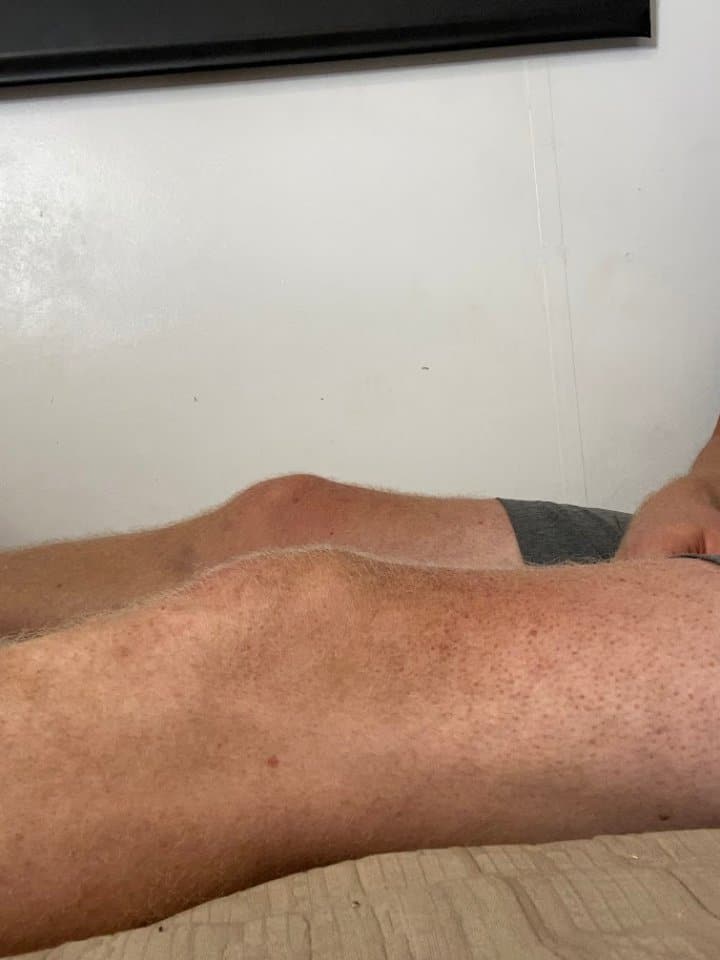
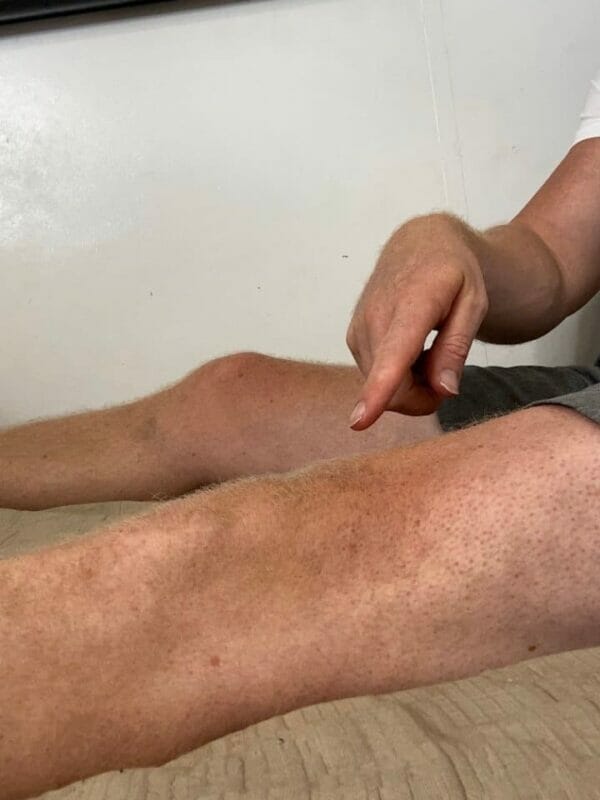
- Starting position: Seated with the injured leg stretched in front of you (can be on the floor, couch, or bed).
- Squeeze the quadriceps (the muscles on the top of the thigh) and try to press the back of the injured knee down toward the surface.
- Hold for 5 seconds, then relax.
- Repeat 10 repetitions for 3 sets.
2. Straight Leg Raise
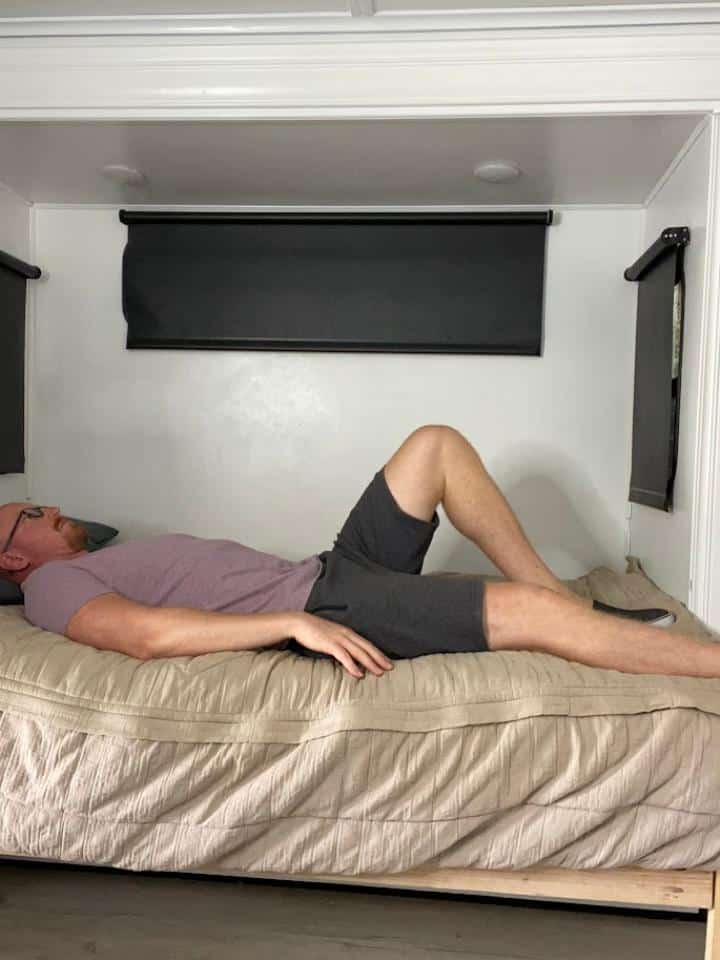
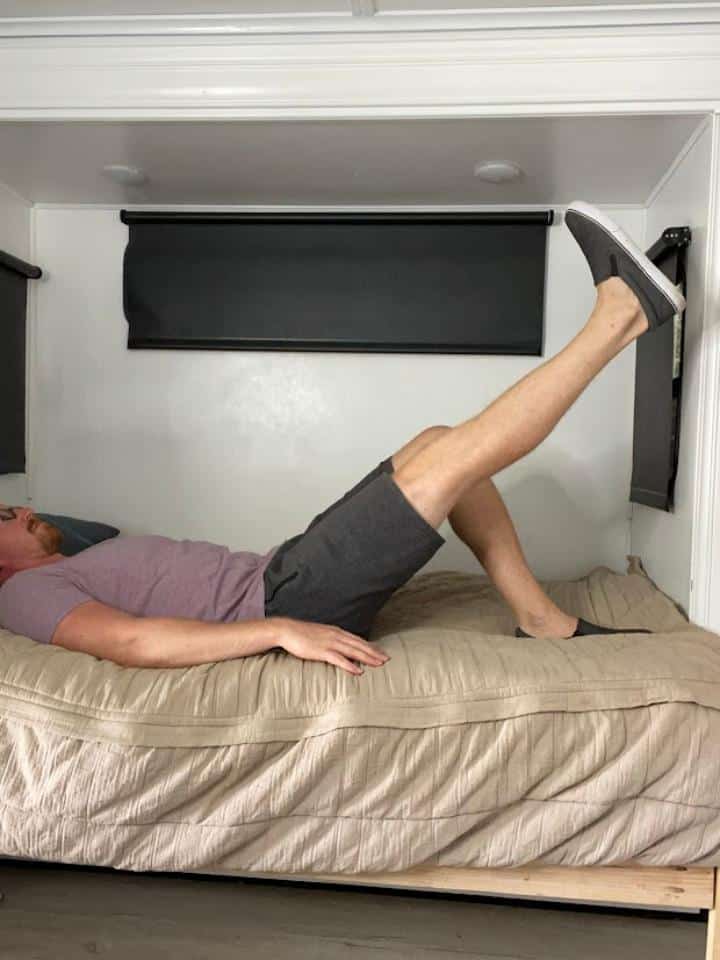
- Starting position: Laying flat on your back with the injured leg straight in front of you and the healthy knee bent with the foot flat on the surface (can lay on the floor, couch, or bed).
- Squeeze the quadriceps, just like in the quad set.
- Hold this squeeze, keeping the knee straight, and lift the entire injured leg in one motion off the surface. Lift the leg until the thighs are at an equal height with each other.
- Lower and return to your starting position.
- Repeat 10 repetitions for 3 sets.
3. Long Arc Quad
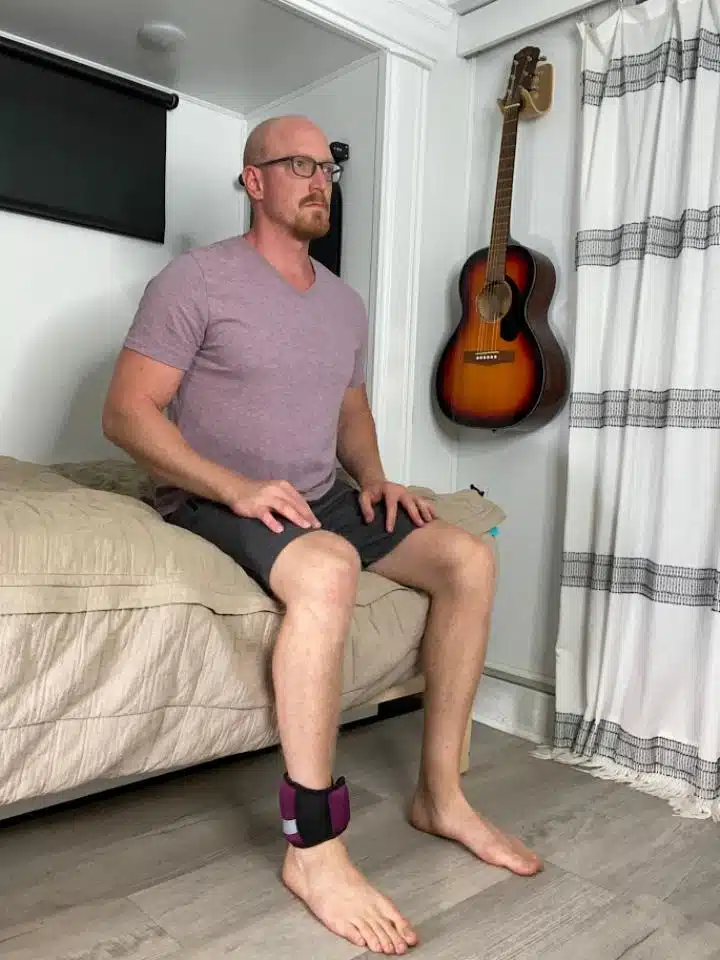
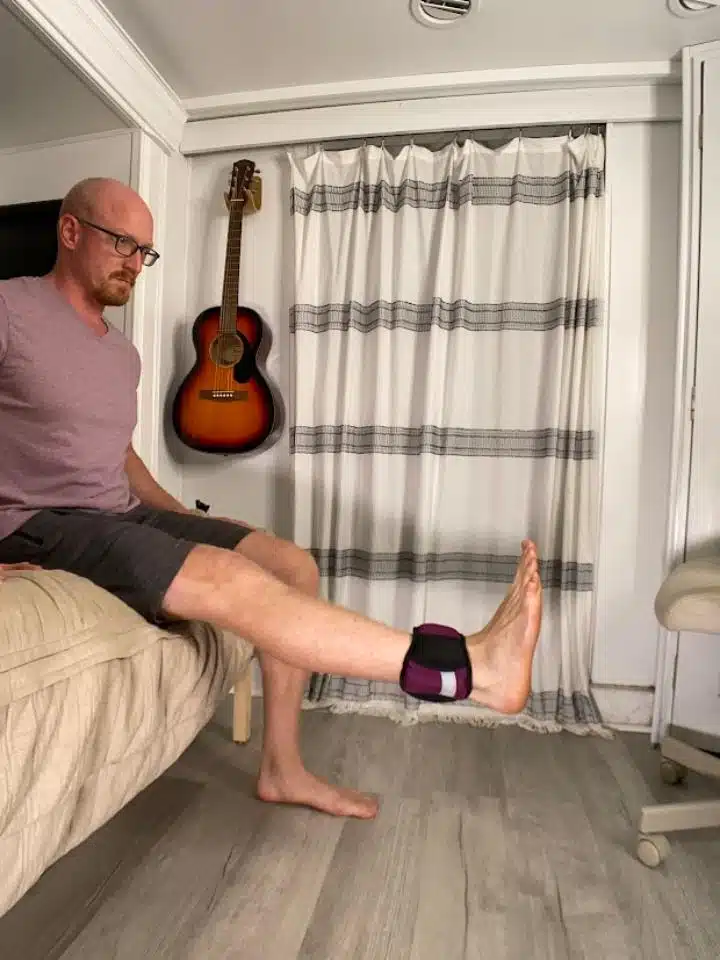
- You can perform this at home using an ankle weight (2-5 lb., as tolerated) or a resistance band tied around the ankles (light, medium, or heavy resistance).
- Begin seated in a chair with the feet flat on the floor.
- Kick the foot up off the floor and allow the knee to straighten fully.
- Hold for 2 seconds, then slowly return to your starting position.
- Repeat 10-15 repetitions for 2 sets.
- Perform on the opposite leg for even symmetry.
4. Terminal Knee Extension
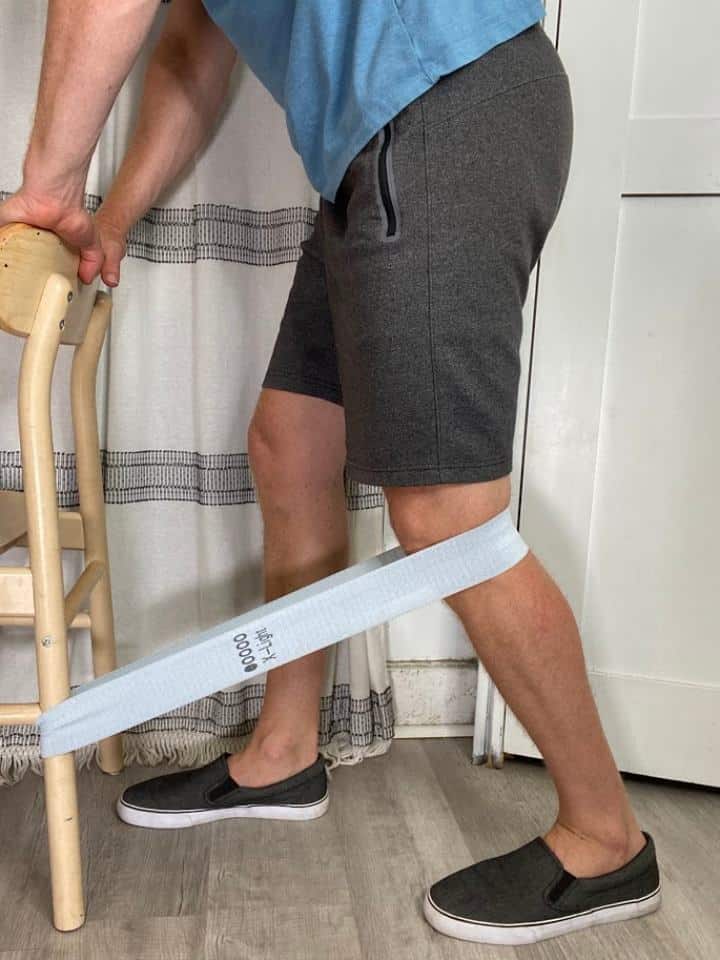
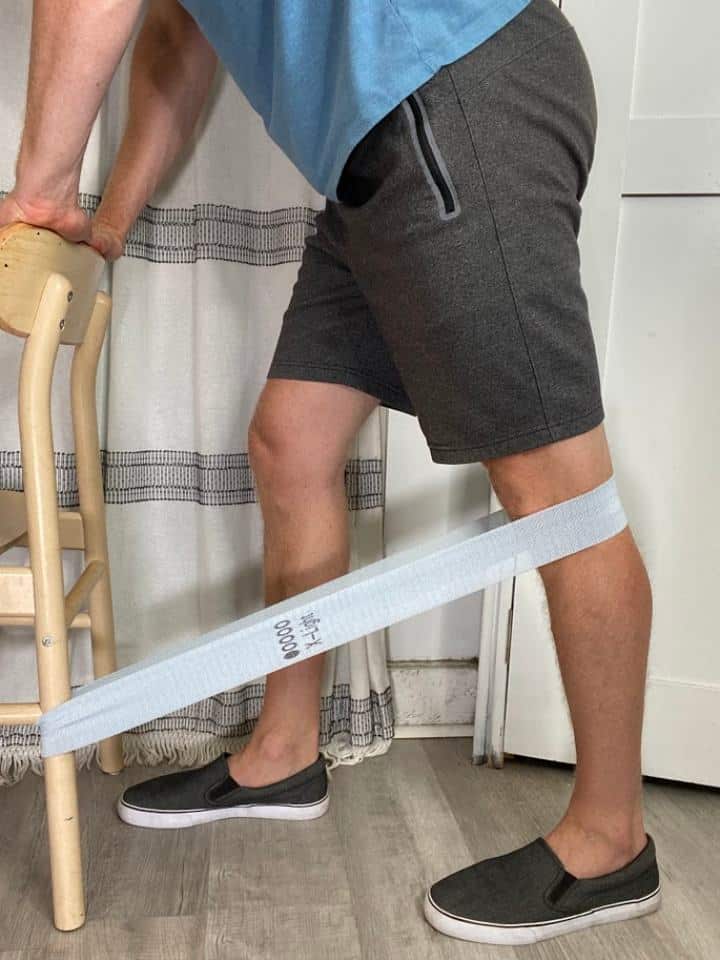
- Attach a resistance band (light, medium, or heavy) to something sturdy, such as a chair leg. The band should be tied so that you create a loop to step into.
- Step into the loop with the injured leg, and position the band so that it’s resting against the back of the knee.
- Stand with the feet side by side, but the knee with the injury will be slightly bent.
- Slowly extend or straighten the knee with the MCL tear. Hold for 5 seconds, then return to your starting position.
- Repeat 10 repetitions for 3 sets.
5. Mini Squat
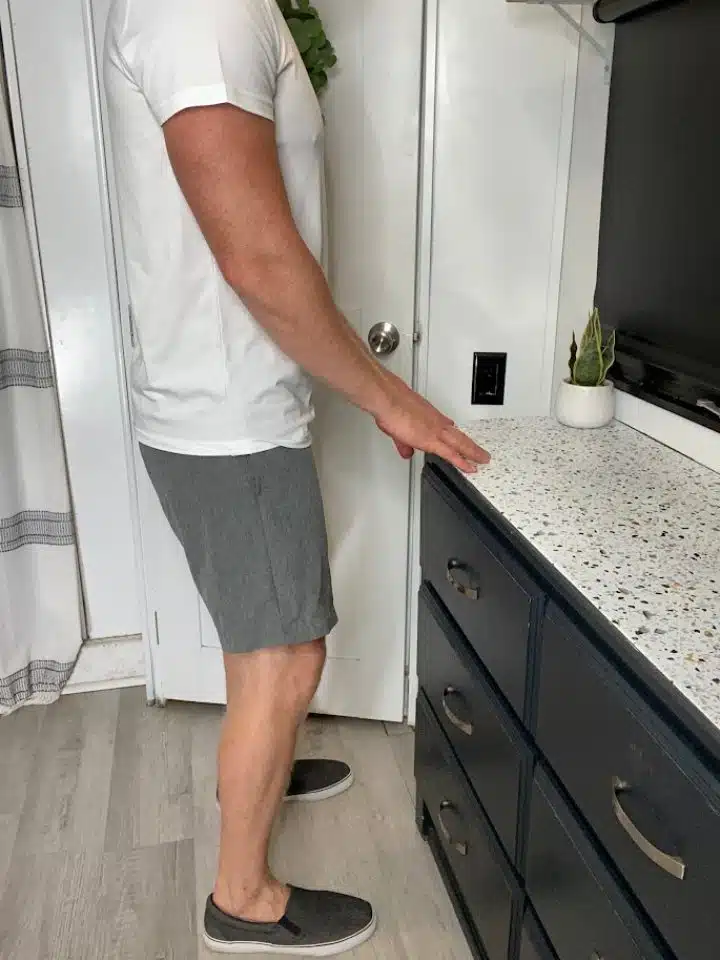
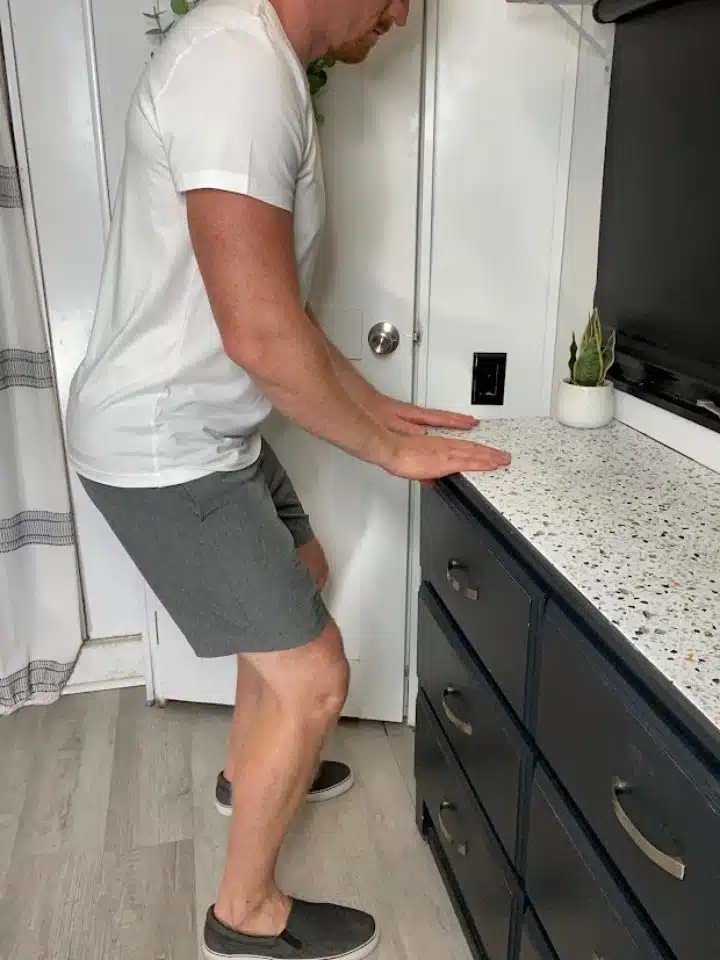
- Stand in front of a supportive surface, such as the countertop.
- Position yourself standing tall with the feet about hip-width apart.
- Slowly bend the knees as the hips sit back towards the feet.
- You should notice your torso slightly tilting forward, hinging at the hips.
- Bend the knees to about a 45-degree angle.
- Hold at the bottom of the squat for 2-5 seconds, then return to your starting point.
- Repeat 10-15x for 2-3 sets.
6. Standing Hamstring Curl
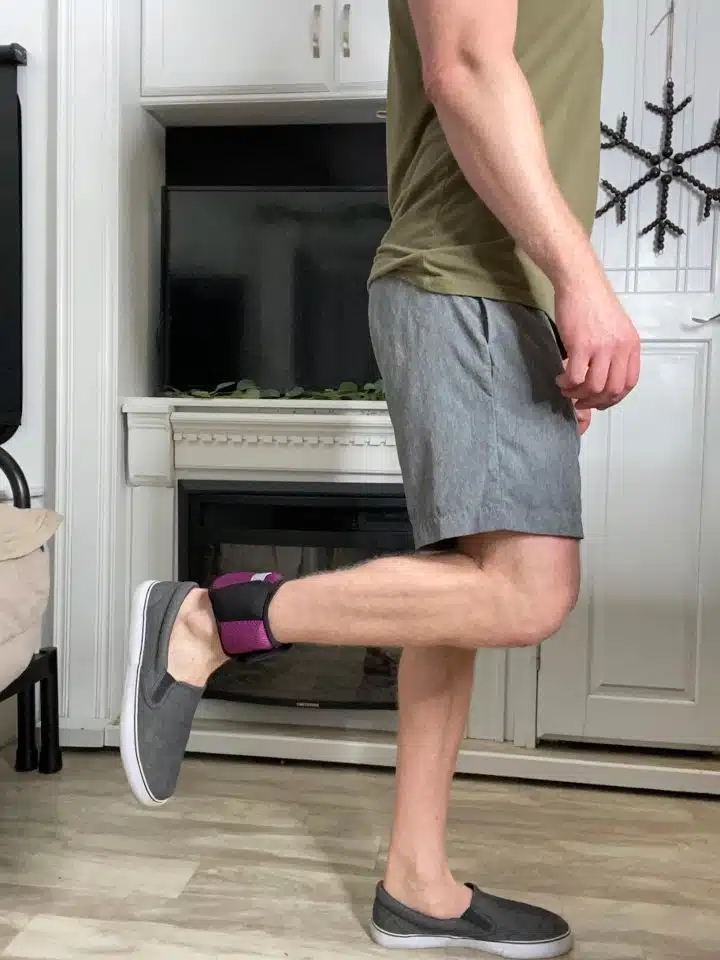
- Use either a 2-3 lb. ankle weight or tie a resistance band (light, medium or heavy resistance) around the ankles.
- Stand in front of something sturdy, like the countertop or a chair, with the feet about hip-width apart.
- Bend one knee, allowing the foot to kick up towards your bottom.
- Hold at the top of the motion for up to 2 seconds, then return to your starting position.
- Make sure to keep the thighs side by side as you kick.
- Repeat 10-15x for 2-3 sets.
Including these exercises in your routine can significantly improve knee strength and mobility, reducing symptoms associated with knee cartilage loss.
Care Tips for Knee Cartilage Loss
Alongside exercises, adopting certain care tips can enhance your overall knee health and aid in managing symptoms effectively.
- Maintain a Healthy Weight: Reducing body weight can significantly decrease the pressure on your knees.
- Wear Supportive Footwear: Choose shoes that provide good arch support and cushioning.
- Stay Active: Engage in low-impact activities like swimming or cycling to keep your joints moving without excessive strain.
- Use Assistive Devices: Consider using knee braces or walking aids if necessary to reduce stress on your knees.
- Rest and Ice: After exercises, rest and apply ice to any swollen or painful areas to reduce inflammation.
Conclusion
Dealing with knee cartilage loss requires a multifaceted approach, combining targeted exercises, lifestyle modifications, and careful attention to your body’s signals. By incorporating the exercises listed above, you can take significant strides toward improving your knee strength and reducing the discomfort associated with cartilage loss. Remember, consistency is key, and incorporating these exercises as a regular part of your routine will yield the best results.
Moreover, adopting the care tips provided will support your journey towards better knee health. It’s also important to consult with a healthcare professional before starting any new exercise regimen, especially if you’re dealing with a condition like knee cartilage loss. With patience, perseverance, and the right approach, you can enhance your knee strength, improve mobility, and reclaim the joy of movement.


